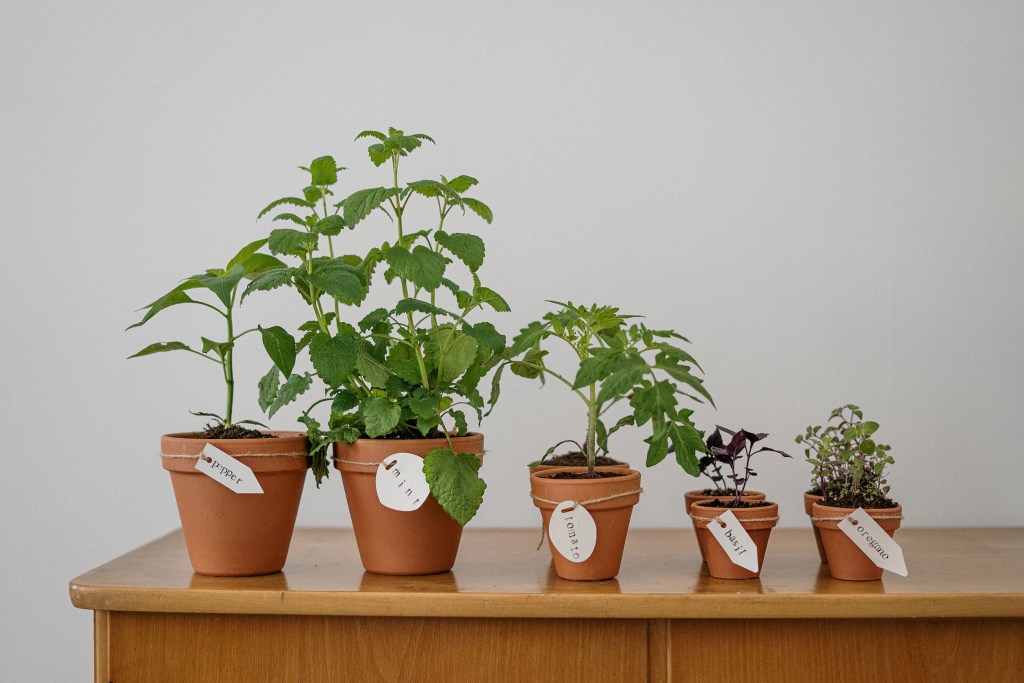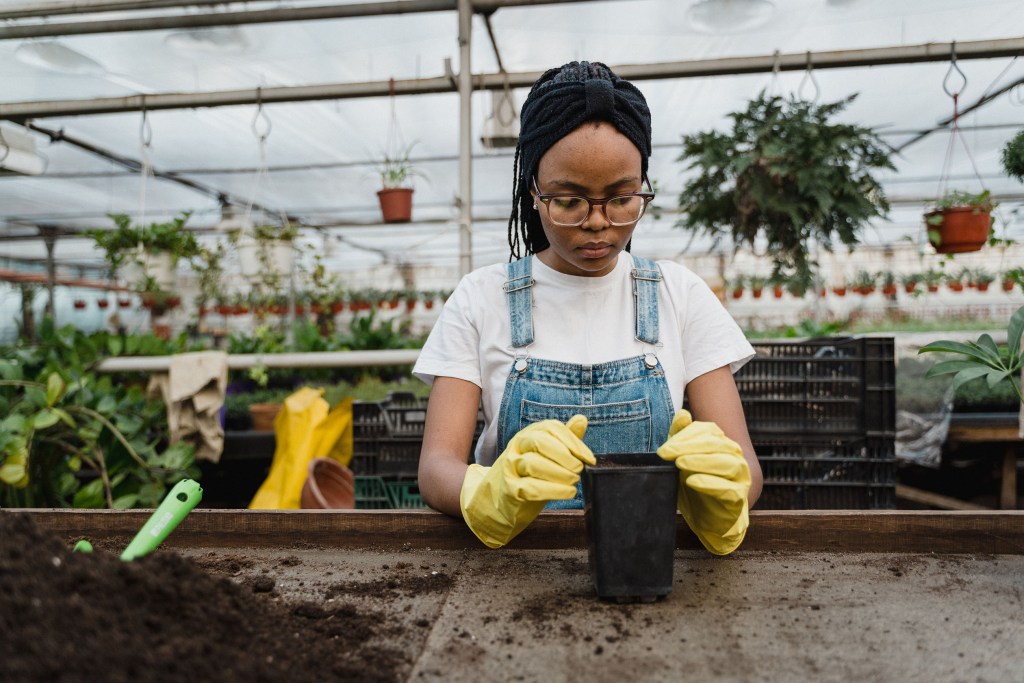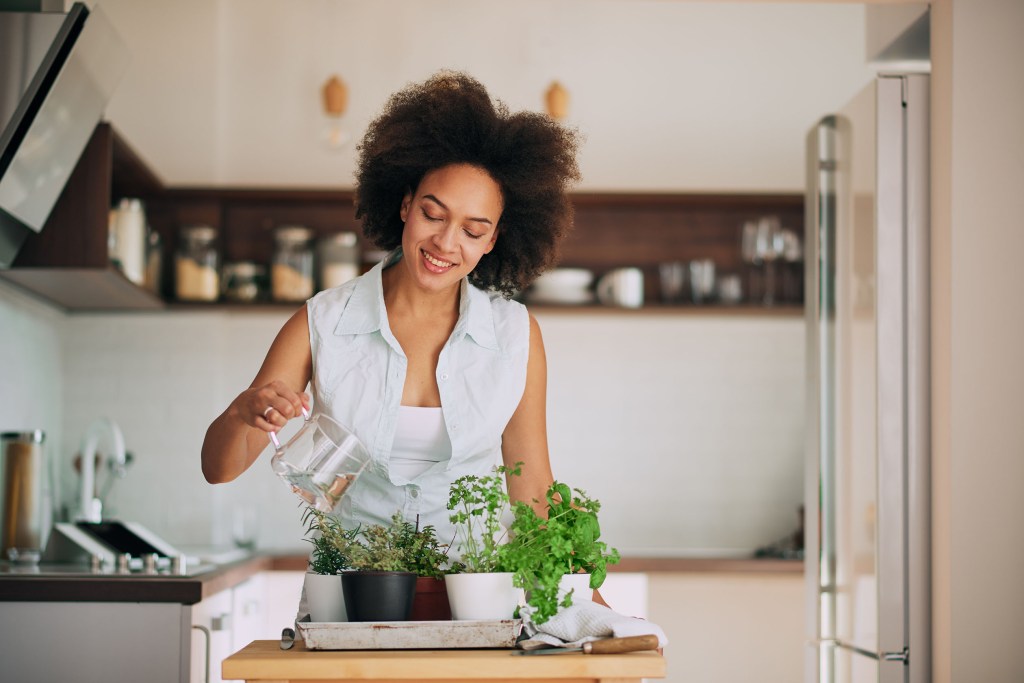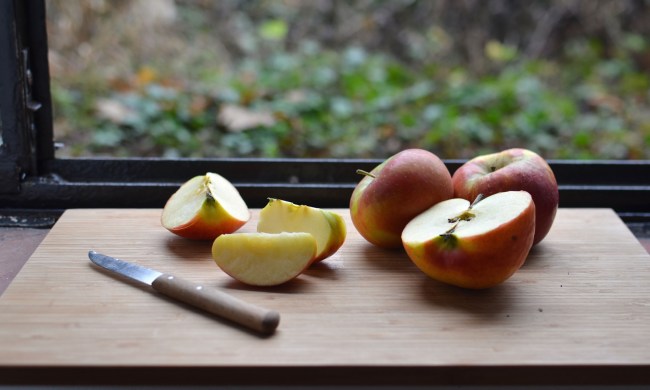Who wouldn’t want fresh herbs at their fingertips every time they cook? This luxury isn’t exclusive to those with a greenhouse and a green thumb. An herb garden is a great way for beginners to dip their toes into the world of edible gardening (which has benefits beyond just great food). Plus, herbs grow well indoors as long as you have a sunny window. With these indoor herb garden tips, you’ll be an expert in no time!

Choose the right herbs
First, decide what type of herbs you want to grow. Most herbs can be grown inside, but some thrive more than others. Great low-maintenance herbs that do well indoors include the following:
- Basil
- Thyme
- Rosemary
- Mint
- Parsley
- Chives
- Oregano
Before you begin planting, consider which herbs you use the most so you can garden with a purpose.
Once you know what you want to plant, determine whether you want to start from seeds or cuttings. A cutting involves taking a branch of an existing plant and soaking it in water until new roots form. This is ideal if you know someone with a healthy herb plant who is willing to share a branch or two. To start from scratch, stop by your local garden shop for seedlings or save yourself the trouble of germination and opt for fully grown plants that you just need to maintain.

Pick a container with proper drainage
Next, choose a container that is suitable for your herbs. They will grow in almost any pot, as long as it has some kind of drainage. You’ll also need a saucer or plastic protector to guard the surface underneath the pot, as dirt and water will start to leak out. You can use any size pot you want, but you might have to repot it in increasingly larger containers as the plant grows. To prevent yourself from constantly repotting, we recommend starting with a five- or six-inch pot.
Find a sunny spot
Look around your home to find the ideal location for your herb garden. Most herbs like a lot of sunlight, so try to give your plants at least six hours of sunlight per day. Typically, south-facing windows get the most sunlight, but as long as you leave them in front of a bright window, they can grow well. Avoid putting them in the center of a room or close to a north-facing window since they won’t get enough sunlight in these positions. If you don’t have enough natural sunlight in your space, invest in an LED or grow light instead. These are excellent options for tending to your plants in the winter when there isn’t a lot of natural light.

Water sufficiently
Small herbs typically do not need a ton of water to survive. To ensure your plant grows, keep the soil moist but not drenched. Use a small watering can to give your herb garden water when you notice the soil is dry, or hold the pot under the sink and drizzle on some water. If the leaves start to wilt or turn yellow, cut down on watering them.
Harvest small amounts at a time
When your plant is big enough, you can start harvesting your herbs. Use kitchen shears or your fingers to take off a few leaves at a time. Regularly cutting back your plant can actually help to encourage new, healthy growth. Be sure to take off only a few sprigs at a time, so your plant can continue to thrive and grow. Don’t remove more than a quarter of the herb at a time; otherwise, you can distress the plant and even kill it.
Transplant when they grow too big
Unfortunately, indoor herb gardens don’t last forever. If you take care of your plants properly, they will eventually outgrow their containers and need more space. You can tell it’s time to transplant your herbs if the roots start growing out of the drainage holes, the plant flops over, or growth stalls. When this occurs, either move them to a larger container or plant them outside.
In most areas, you can plant perennial herbs like mint in the ground after the last frost of the year and keep them outside through the end of the growing season. When the cold weather arrives, bring the pots inside. If you’d rather not transfer the plants back inside, take cuttings and restart your indoor herb garden all over again!
It’s that easy! Growing plants indoors is simple as long as you keep the gardening basics in mind: water and sunlight. With a little bit of care and patience, you can enjoy freshly grown herbs with every meal.
Bon appétit!
BlissMark provides information regarding health, wellness, and beauty. The information within this article is not intended to be medical advice. Before starting any diet or exercise routine, consult your physician. If you don’t have a primary care physician, the United States Health & Human Services department has a free online tool that can help you locate a clinic in your area. We are not medical professionals, have not verified or vetted any programs, and in no way intend our content to be anything more than informative and inspiring.



